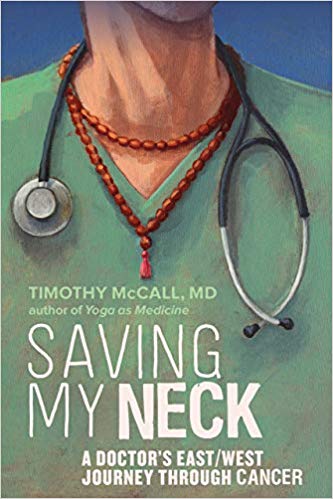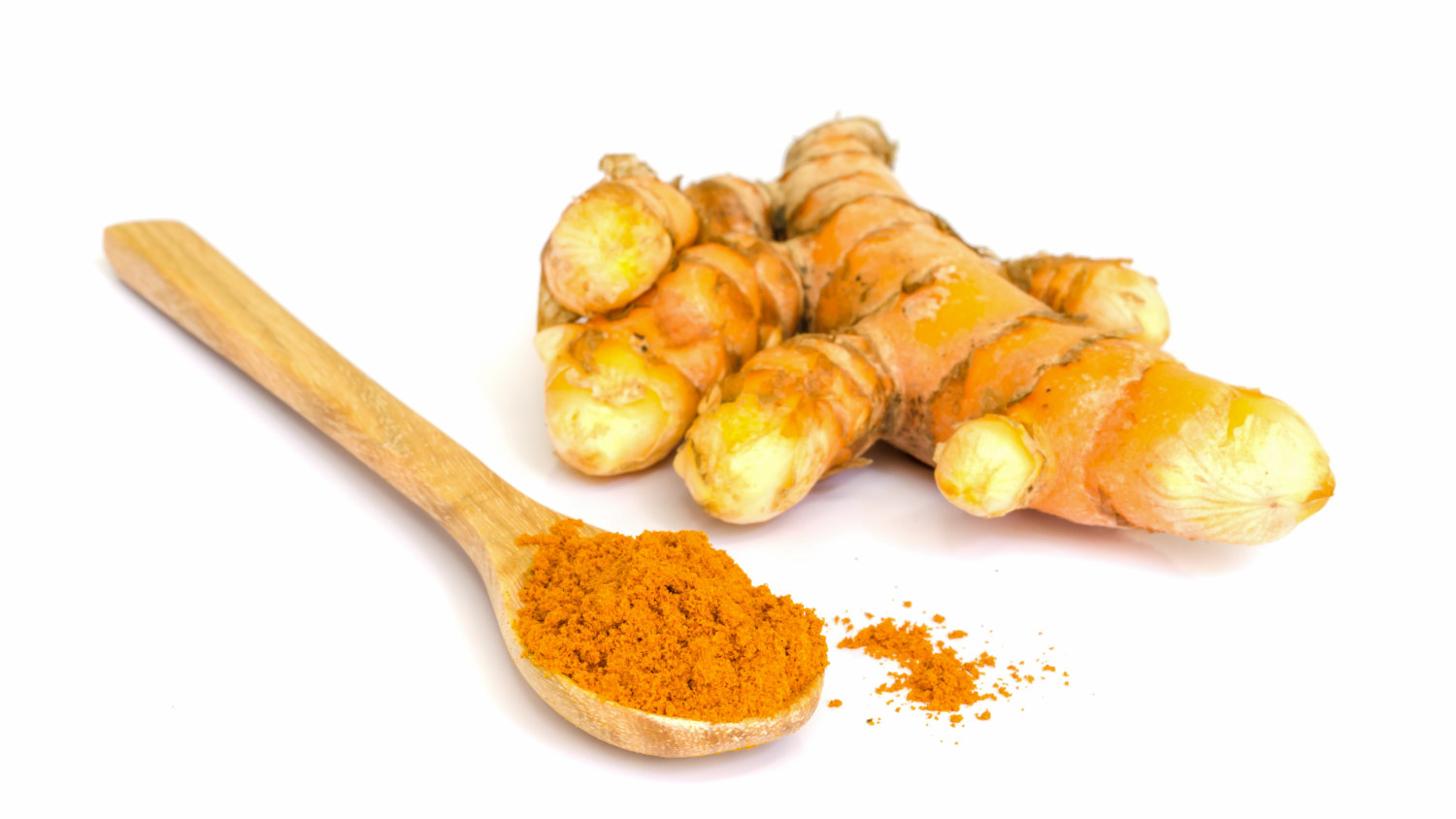View basket (0 items $0.00)

Book Review: Timothy McCall's Saving My Neck: A Doctor's East/West Journey Through Cancer
There is much talk these days of integrative medicine, complementary approaches to disease, and allopathic vs. “alternative” medicine. As both a board-certified medical doctor and yoga therapist, Timothy McCall, MD. has a unique perspective on these topics. His recent memoir, Saving My Neck: A Doctor’s East/West Journey Through Cancer, probes these subjects from a theoretical viewpoint as well as a personal one. He describes in great detail his own experience of cancer, its treatment, and the aftermath of treatment.
McCall is trained in Western medicine and was a practicing medical doctor specializing in internal medicine for 13 years. In 1997, he decided to leave the medical profession and devoted himself to yoga, eventually becoming a yoga therapist. He also became a student of Ayurveda and studied in India with Chandukutty Vaidyar, a traditional Ayurvedic doctor. 
In 2016, he was diagnosed with metastatic head and neck cancer. He decided to approach his cancer treatment with the same blend of East and West that had unfolded in his own life’s journey—and then write a book about his experience.
He states very clearly at the outset his intention for the book: “This book is a memoir and not intended as medical advice … Saving My Neck is not a how-to guide for dealing with cancer in general or the particular kind that affected me.” (7)
The book most certainly is a memoir and an incredibly comprehensive one at that. His blow-by-blow account of his entire course of treatment is exhaustive. He includes details of his encounters with his allopathic doctors, the myriad of holistic treatments he uses, his living arrangements, conversations with family members and friends, diet, side effects, energy levels, and more.
Blending East and West: Chemo, Radiation, Yoga, and Ayurveda
McCall’s Western medicine team includes his primary care provider; ear, nose and throat specialist; medical oncologist; and radiation oncologist. His Eastern medicine team is just as extensive, comprising Ayurvedic doctors, an acupuncturist, and a traditional Chinese medicine doctor.
Before, during, and after receiving chemotherapy and radiation treatment, he researches and engages in multiple holistic modalities. He explains his rationale for this East/West approach: “ … the cancer is being dosed with toxic chemicals and radiation, while the soil of my body is cared for with healthy whole foods, deep relaxation, and herbs.” (23)
Among the holistic treatments he explores are yoga, Ayurveda, hyperthermia, chanting, Qi Gong, herbs, medicinal mushrooms, acupuncture, fasting, oil-pulling, turmeric cream, visualization, and breath retention. He turns to these “alternative” approaches to both prepare for and also deal with the side effects of chemotherapy and radiation; to minimize the damage to his body that might lead to aftereffects, and to support his body on its journey back to health after the onslaught of chemo and radiation is over. 
While he was not completely cured of cancer after treatment, he responded very well and had a “complete clinical response.” No signs of cancer were detected after treatment, but there is a 5 to 10 percent chance that cancer will return within three years.
Holism vs. Reductionism, Yoga vs. Drugs
McCall repeatedly explores the idea of holism vs. reductionism in medicine. He contrasts a holistic approach that treats the whole person (i.e., yoga, Ayurveda, Chinese medicine) with a reductionist approach that targets individual symptoms (i.e., Western allopathic medicine, pharmaceuticals). He explains why yoga, Ayurveda, and other such holistic modalities do not lend themselves to the Evidence-Based Medicine (EBM) approach that is so favored by Western medicine:
“Some holistic tools, say a mantra or a low dose of an herb, might not be powerful enough to generate a statistically significant difference in a disease process when studied in isolation. But when working synergistically as part of a holistic regimen, they might indeed contribute to overall effectiveness. EBM insists on studying each element of a treatment approach one at a time, so such research does not detect synergistic benefits—yet can be used as evidence that the treatments are ineffective.” (197)
He argues that yoga’s holistic approach actually works against it in the field of medical research, as does the fact that there is less funding available to study yoga (which can be practiced for free) than there is to study drugs (which can lead to millions of dollars in profit for the pharmaceutical companies that fund the studies).
The Best of Both Worlds: Yoga AND Drugs
McCall states, “For many malignancies, including mine, I believe the best results come from a combined approach. Such an approach takes full advantage of modern scientific medicine while using holistic treatments to address the many areas of mind, body, and spirit that conventional medicine neglects.” (22)
His memoir serves as an in-depth narrative of this approach from a very personal perspective. As such, it contributes much to the conversation of blending the best elements from Eastern and Western medicine to create an optimal, livable, and sustainable approach to healing in our modern, globally integrated age.
Learn more about this topic with YogaUOnline and Dr. Timothy McCall's course-Yoga as Medicine: A New Paradigm for Health.
Yoga practice tips and inspiration from writer, Christine Malossi, and YogaUOnline-6 Poses to Counteract the Effects of Sitting.
Study with YogaUOnline and Robin Rothenburg-Restoring Prana: Key Roles of the Diaphragm in Health and Vitality.
 Christine Malossi began practicing yoga in 1999. Based in New York City, she offers an alignment-focused, slow Vinyasa practice that cultivates awareness and equanimity. She is currently enrolled in an 800-hour course on the History, Literature, and Philosophy of Yoga (taught by Brenda Feuerstein, designed by the late Georg Feuerstein). Christine is a Registered Yoga Teacher with Yoga Alliance and has additional certifications in Therapeutic Yoga, Restorative Yoga, Accessible Yoga, and Functional Anatomy for Movement and Injuries. She attended the University of Pennsylvania and NYU and also spent many years studying classical ballet. Find her at christinemalossi.com.
Christine Malossi began practicing yoga in 1999. Based in New York City, she offers an alignment-focused, slow Vinyasa practice that cultivates awareness and equanimity. She is currently enrolled in an 800-hour course on the History, Literature, and Philosophy of Yoga (taught by Brenda Feuerstein, designed by the late Georg Feuerstein). Christine is a Registered Yoga Teacher with Yoga Alliance and has additional certifications in Therapeutic Yoga, Restorative Yoga, Accessible Yoga, and Functional Anatomy for Movement and Injuries. She attended the University of Pennsylvania and NYU and also spent many years studying classical ballet. Find her at christinemalossi.com.
Featured Courses









